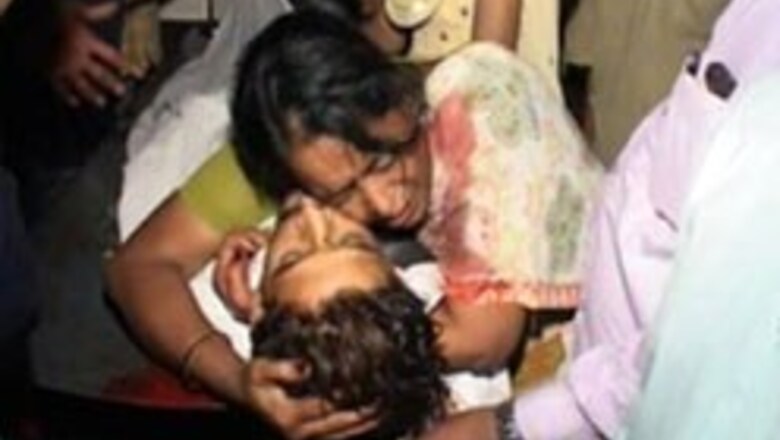
views
Mumbai: Successive terror strikes suggest that the Indian state is unable to secure its citizens. In fact the sophistication shown by terror groups has surprised security agencies.
On July 11, 2006 the Mumbai serial blasts brought it to a grinding halt. Just two montha later, on September 8, 2006 two blasts rocked Malegaon - a sleepy town with a history of communal violence. A year later on May 18, 2007 an explosion at Hyderabad's Mecca Masjid shook the city. And on August 25, two blasts ripped across the city killing 44 and injuring over a hundred.
But a week after the city’s twin blasts, investigators admit off camera that there aren't too many clues. Could the pattern of terror be changing? Experts say the 2001 Parliament attack was the last time a single terror cell executed an attack.
While Intelligence Agencies are netting the minor players, they have very little idea of the larger structure of a terror attack, of its logistics, the procurement and delivery of weapons or explosives or indeed, the identity the mastermind.
Terror groups now have deep networks of sympathisers trained in bomb making, surveillance and other skills, and they often collaborate.
“Over the last two and a half years almost every major operation that has been executed by the Islamic terrorist in India out side Jammu and Kashmir has been a joint operation, more than one group is collaborating to execute the strike,” said Executive Director South Asia Terrorism Portal, Ajai Sahni.
Experts are now also sure of a Pakistan-Bangladesh axis in masterminding terror.
“When Pakistan sets up or the Pakistan ISI sets up cells or organisations in Bangladesh with the knowledge connivanance and consent of Bangladesh authorities which includes Bangladesh Army, we must assume that Bangladesh army is privy to such activities not only privy but subscribes to the objective of those things,” said Director of RAW, A K Verma.
When asked about terror fundings, the Chief of the Maharashtra Anti-terror Squad, K P Raghuvanshi said, “Money is like oxygen for these terrorists and it needs to be cut off.”
But cutting off this oxygen is not easy. For instance, the cost of the Malegaon operation was Rs 15 lakh, which was sent to India in several small amounts over a period of four years, using the hawala route.
“It’s hard to stop these hawala rackets as these rackets don't have a face,” said Raghuvanshi.
The other strategy is using counterfeit cash, which allows terror modules to bypass banking systems. It’s a chilling coincidence that the Hyderabad Police seized more than Rs 2 crore in fake money just hours before the August 25 blasts.
“Yes the money came. It came from Pakistan via Dubai,” confirmed Hyderabad City Police Commissioner, Balwinder Singh.
However, the main challenge before the investigating agencies now is not only to identify the masterminds but also to cut their sources of funding.
Obsessed with terror attacks, we often ignore the cancer of fanaticism that drives the terrorists. There are more Shahid Bilals (suspected Hyderabad blast mastermind and the commander of Harkat-ul-Jehad Islam) in Hyderabad’s by-lanes. Can we change their minds before more innocent lives are lost?


















Comments
0 comment